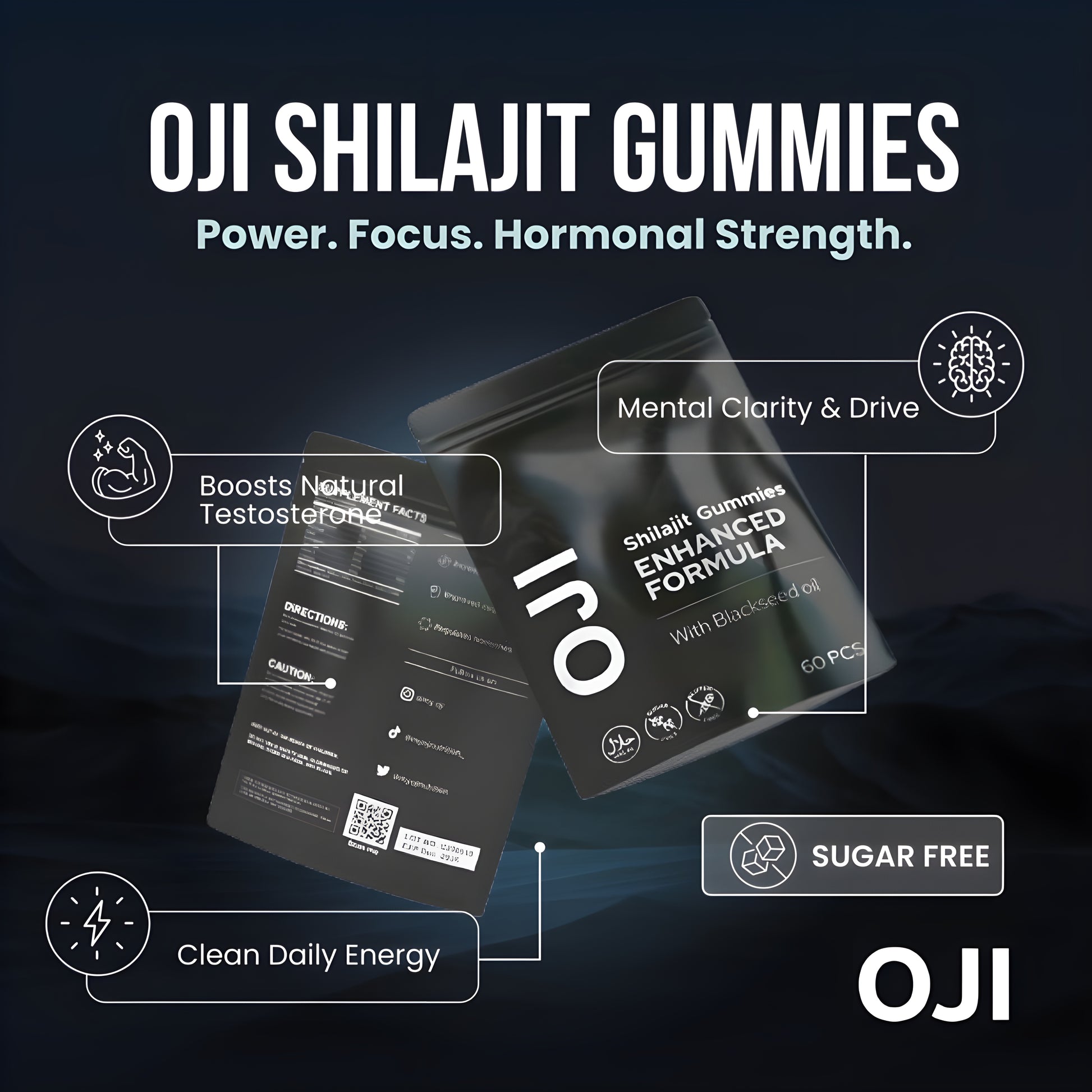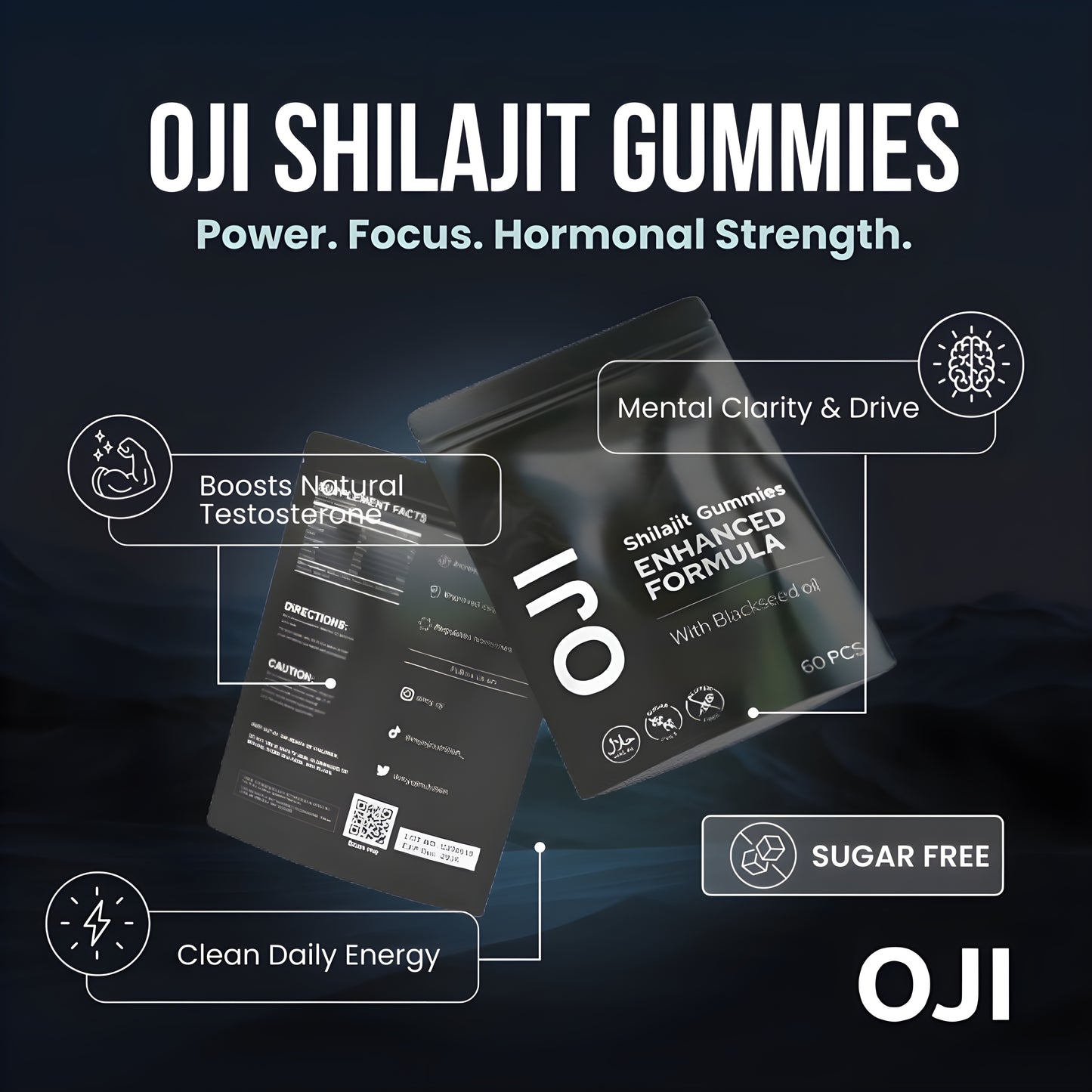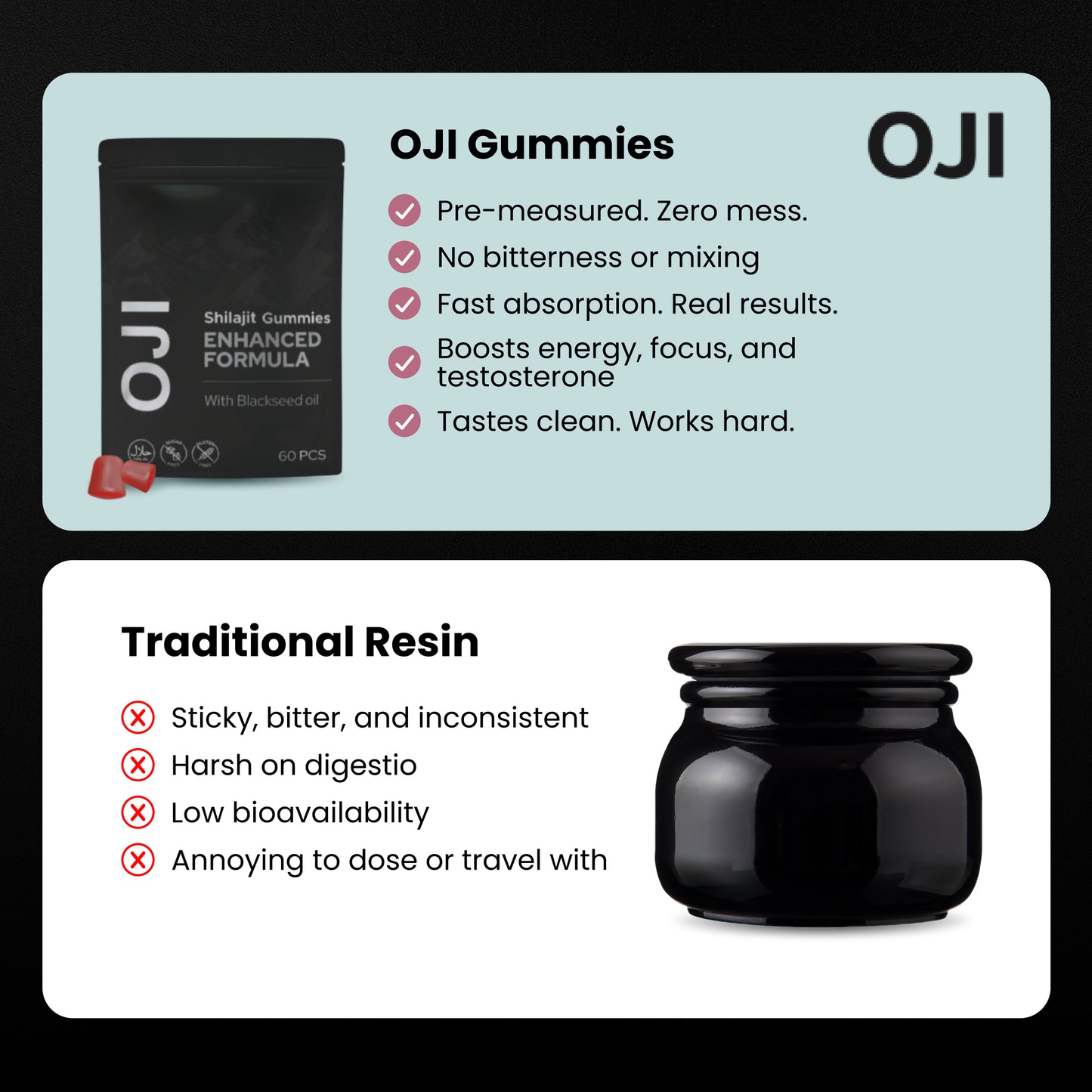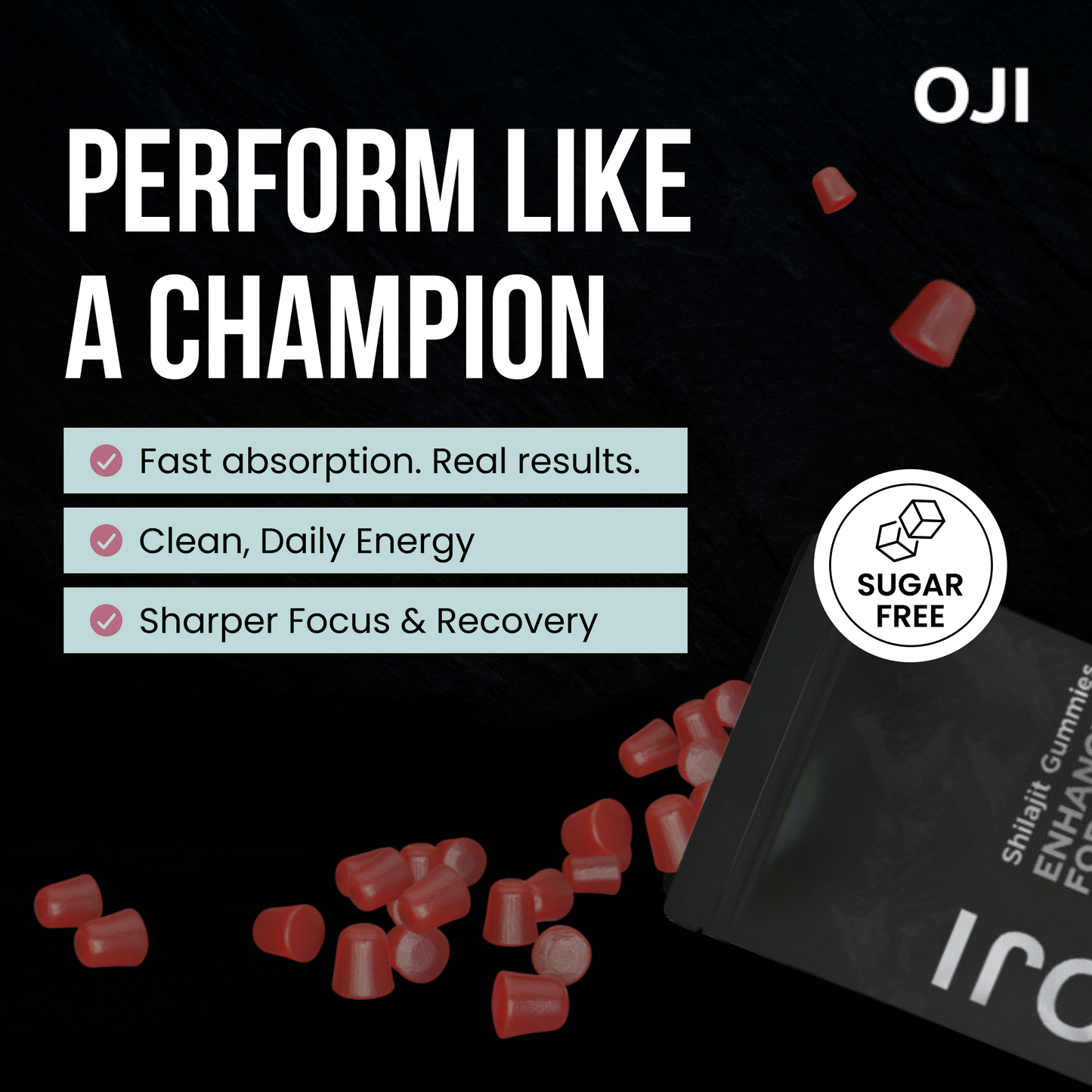To build muscular endurance, you need an actionable game plan. The secret is to focus on high-repetition, low-weight resistance training with minimal rest. This approach trains your muscles to fight fatigue and sustain effort, a different goal than training for raw strength.
Implement this strategy by performing more reps with lighter weights and taking shorter breaks between sets.
What Is Muscular Endurance And Why It Matters

Before you start training, understand what you're building. Muscular endurance is the ability of a muscle to exert force repeatedly over time. It's the difference between doing one heavy back squat (strength) and performing 20 bodyweight squats in a row without losing form (endurance).
This is the type of functional fitness that helps you carry shopping bags up several flights of stairs, complete a tough HIIT class, or hold a plank for an extra 30 seconds.
The Real-World Impact Of Endurance
Boosting your muscular endurance provides practical benefits that extend far beyond the gym. It is a cornerstone of functional fitness that makes daily life easier and supports long-term health.
Here are the key benefits you will gain:
- Improved Posture and Stability: Strengthen your core and back muscles to help you stand taller, reduce slouching, and prevent common aches and pains.
- Enhanced Athletic Performance: Maintain proper form and technique even when fatigued, which is crucial for maximizing performance and preventing injuries in any sport.
- Increased Work Capacity: Handle more physical activity before feeling exhausted. Everyday tasks like gardening or playing with your kids will feel significantly easier.
Despite these advantages, endurance training is often overlooked. In the UK, participation in muscle-strengthening activities remains low. The 2016 Health Survey for England found that only 34% of men and 24% of women met the recommended national guidelines.
Use muscular endurance as your secret weapon against fatigue. You are training your muscles to become more energy-efficient, delaying the burn that signals you to stop.
To get the full picture, it's also helpful to understand how to improve your stamina for lasting energy. This type of training fundamentally changes how your muscle fibres operate, letting them fire over and over again for much longer. That’s the real key to sustained performance.
How to Structure Your Endurance Training for Maximum Effect
To build serious muscular endurance, you must adjust your lifting strategy. Stop focusing on your one-rep max. Instead, prioritize teaching your muscles to resist fatigue and keep working set after set. To achieve this, dial in three key variables: your repetition range, rest periods, and the weight you lift.
First, shift your focus away from the traditional strength training model of low reps and heavy weight. For endurance, adopt a 15 to 25 repetition range for every set. This extended time under load is the precise stimulus your muscles need to become fatigue-resistant.
Select your weight carefully. It must be light enough to complete all reps with good form but heavy enough to make the final few repetitions challenging. If you can easily perform more than 25 reps, the weight is too light. If you cannot reach 15 reps, it's too heavy.
Reps, Rest, and Time Under Tension
Now, let's focus on the most critical element: your rest periods. Forget taking long two-to-three-minute breaks. For endurance, you must keep your rest periods short. Aim for 30 to 60 seconds of rest between sets, maximum. This brief recovery window maintains metabolic stress on the muscles, forcing them to adapt and clear waste products more efficiently.
By combining high repetitions with short rest, you maximize your Time Under Tension (TUT)—the total duration a muscle is working during a set. The longer the TUT, the stronger the signal for building endurance.
Consider a cyclist whose quadriceps must contract thousands of times during a race. Their training must reflect this demand. Performing sets of 20 leg presses with minimal rest is far more specific and effective for their sport than grinding out heavy sets of five.
Using Progressive Overload the Smart Way
Progressive overload—gradually increasing the demand on your muscles—is the foundation of any successful training program. For endurance, however, simply adding more weight is not always the best approach.
To achieve long-term endurance gains, think beyond just lifting heavier. Use creative methods to consistently make your workouts more challenging, targeting your stamina rather than just your raw strength.
Here are four actionable ways to apply progressive overload for endurance:
- Increase Your Reps: If you completed three sets of 18 squats last week, aim for three sets of 20 this week using the same weight.
- Add Another Set: Instead of three sets of 20, progress to four sets of 20 to increase your total training volume.
- Decrease Your Rest Time: If you were resting for 60 seconds, cut it down to 50 seconds this week to increase the workout's intensity.
- Control the Tempo: This is a highly effective technique. Slow down the movement. For a squat, take three seconds to lower down (eccentric phase) and one second to drive back up (concentric phase). This dramatically increases the time under tension.
By cycling through these variables, you can create a sustainable training plan that constantly challenges your muscles to adapt, leading to real, lasting endurance.
Your Weekly Muscular Endurance Training Plan
Now that you understand the principles of reps and rest, it's time to apply them with a structured, week-long training schedule.
A clear plan removes guesswork and ensures you target all major muscle groups for balanced, full-body endurance. This is a strategic approach designed to build serious fatigue resistance.
Focus on compound movements—exercises that engage multiple muscle groups simultaneously—for maximum efficiency. Supplement these with isolation exercises to target specific areas. Remember to prioritize perfect form. The weight should be challenging enough that the last few reps are a struggle, but never so heavy that your technique breaks down.
Structuring Your Training Days
A three-day-a-week split is an effective and sustainable starting point. This frequency provides enough stimulus for your muscles to adapt while allowing for crucial recovery time, which is when growth occurs.
Organize your plan using a classic Push, Pull, and Legs split. This proven method groups muscles by their movement patterns, preventing overtraining and ensuring each muscle group receives adequate attention.
- Push Day: Train your chest, shoulders, and triceps.
- Pull Day: Focus on your back and biceps.
- Legs & Core Day: Work your quads, hamstrings, glutes, and abs.
This structure helps manage recovery and keeps your workouts efficient. The image below outlines the core principles to apply to every exercise.
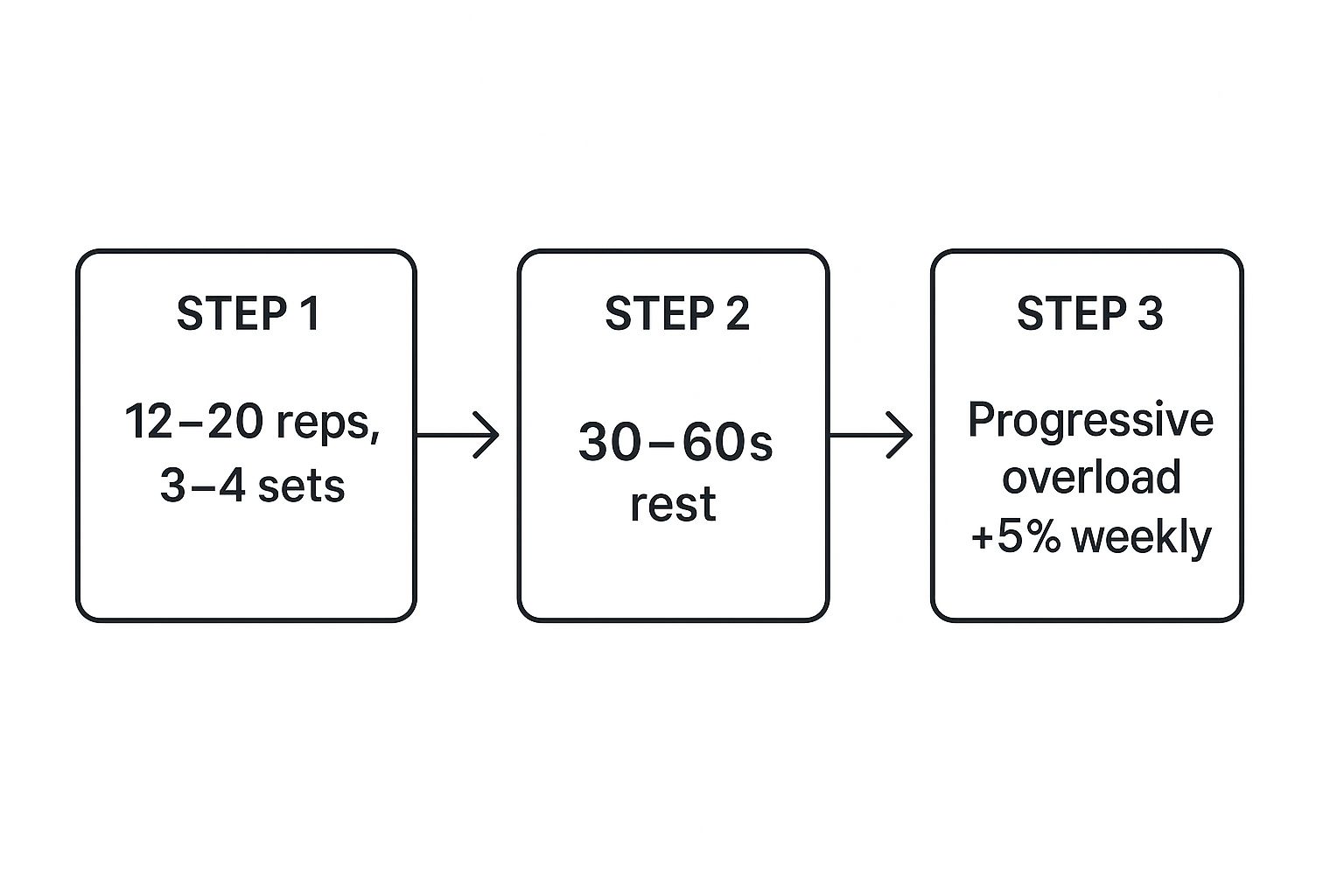
This graphic summarises the approach. Every workout in this plan is built on high reps, short rest, and consistent progression—the pillars of building muscular endurance.
The Full 3-Day Workout Plan
Here is a practical Push, Pull, Legs split. Follow this table to know exactly what to do each training day. The goal is to build stamina in the muscles used for daily actions like pushing doors, pulling yourself up, or carrying groceries.
Sample 3-Day Muscular Endurance Workout Split
| Day | Focus | Exercise | Sets x Reps | Rest |
|---|---|---|---|---|
| 1 | Push | Dumbbell Bench Press | 3 x 15-20 | 30-45s |
| Overhead Dumbbell Press | 3 x 15-20 | 30-45s | ||
| Incline Push-Ups | 3 x To Failure | 30-45s | ||
| Tricep Dips (on bench) | 3 x 15-20 | 30-45s | ||
| 2 | Pull | Bent-Over Dumbbell Rows | 3 x 15-20 | 30-45s |
| Lat Pulldowns | 3 x 15-20 | 30-45s | ||
| Seated Cable Rows | 3 x 15-20 | 30-45s | ||
| Bicep Curls | 2 x 20-25 | 30-45s | ||
| 3 | Legs & Core | Goblet Squats | 4 x 20-25 | 30-45s |
| Walking Lunges | 3 x 20 (10/leg) | 30-45s | ||
| Romanian Deadlifts | 3 x 15-20 | 30-45s | ||
| Plank | 3 x 45-60s hold | 30-45s |
This balanced weekly plan is designed to systematically build your endurance across your entire body. Adhere strictly to the short 30-45 second rest periods, as this is critical for keeping metabolic stress on your muscles.
Pro Tip: Start with bodyweight exercises if you're new to training. Master high-rep bodyweight squats, lunges, and push-ups to build a strong foundation and perfect your form before adding external weight.
Leg day is especially vital for overall fitness and functional strength, particularly if you're a runner. For more specific advice on that, you can check out how to improve stamina for running in our detailed guide.
Fueling Your Body for Sustained Performance
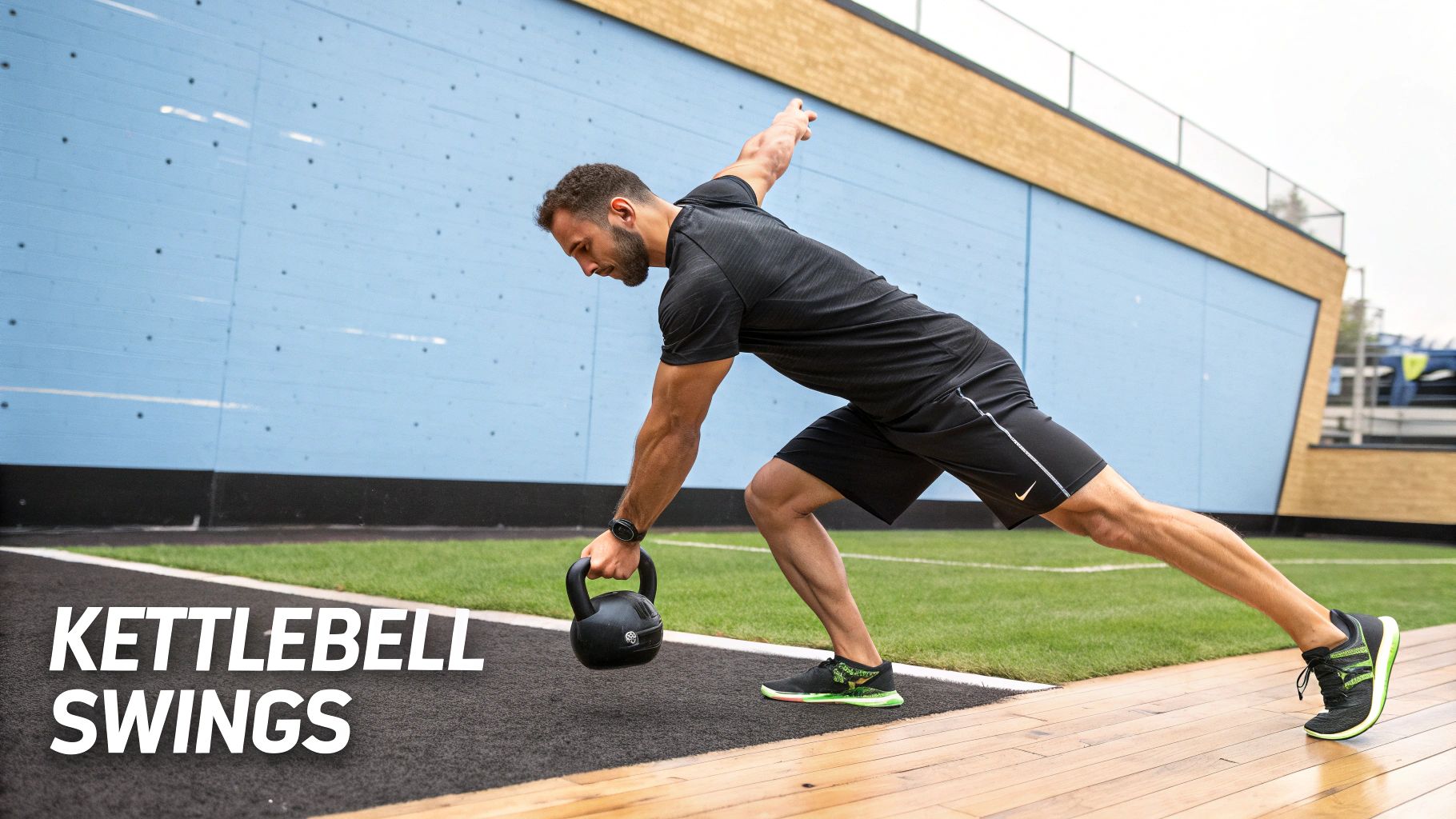
Your hard work in the gym will be wasted without proper nutrition. To achieve peak performance, you must provide your body with the right fuel. Building muscular endurance requires a consistent supply of energy for your workouts and the right nutrients for muscle repair.
You don't need a complicated or restrictive diet. Instead, make smart, simple choices that directly support your training goals. Prioritize whole foods to get the sustained energy needed to power through high-rep sets and recover effectively.
The Macronutrients That Matter
When fueling for endurance, focus on three essential macronutrients. Each plays a distinct and vital role in helping you perform better for longer.
- Complex Carbohydrates: Make these your primary energy source. Choose slow-release carbs like oats, quinoa, and sweet potatoes to provide a steady stream of fuel, and avoid simple sugars that lead to energy crashes.
- Lean Protein: This is essential for muscle repair and growth. After a workout, consume protein from sources like chicken, fish, tofu, or legumes to supply the amino acids needed to rebuild muscle fibres stronger and more fatigue-resistant.
- Healthy Fats: These are crucial for hormone production and cellular health. Include foods like avocados, nuts, and olive oil to support your long-term health, which is the foundation of consistent training.
To ensure you have enough energy for your workouts, explore effective pre-workout meal ideas to enhance endurance. A simple snack like a banana with almond butter can significantly improve your performance.
Practical Fuelling and Hydration Tips
Let's put this into action. After your workout, prioritize replenishing your energy stores and initiating the recovery process. Consume a meal containing a balance of protein and carbohydrates within one to two hours. A great example is grilled salmon with quinoa and roasted vegetables.
Hydration is equally critical. Even mild dehydration can significantly impair performance, causing muscles to feel weaker and fatigue to set in faster.
Do not wait until you feel thirsty to drink. Thirst is a sign that your performance has already declined. Sip water consistently throughout the day, especially on training days.
For those seeking an extra edge, understanding how to support your body's energy systems is key. If you're curious about how specific nutrients can aid your training, you might be interested in our guide on supplements for endurance.
Smart Recovery and Avoiding Common Training Plateaus
Real progress is made during rest, not just in the gym. Without smart recovery, your muscles cannot repair, adapt, and become more resilient. Build sustainable habits to prevent burnout and ensure continuous improvement.
Proper recovery is more than just taking days off. Accelerate the process by incorporating active recovery—low-intensity movements like a brisk walk, a gentle bike ride, or stretching. This increases blood flow to your muscles, helping to flush out metabolic waste and deliver nutrients for repair.
Use a foam roller as another effective recovery tool. Spend 10-15 minutes after a tough session rolling out your quads, hamstrings, and back to relieve muscle soreness and improve flexibility. This simple habit will prepare you for your next workout. For a deeper dive, check out our guide to effective muscle recovery after a workout.
Breaking Through Training Roadblocks
Every athlete eventually hits a plateau—that frustrating point where progress stalls despite consistent effort. Your rep counts stop increasing, and your motivation may begin to wane.
To break through a plateau, you must introduce a new stimulus. Your body is highly adaptable; if you perform the same routine for too long, it no longer has a reason to change.
A plateau is not a sign of failure. It is a sign that your body has successfully adapted to your current training. It is time to introduce a new challenge.
Here are three proven methods to break through a training rut:
- Vary Your Exercises: If you have been doing goblet squats for weeks, switch to front squats or walking lunges. A small change in the movement pattern can activate muscle fibres in a new way.
- Incorporate Circuit Training: Instead of completing all sets of one exercise before moving to the next, create a circuit of 4-5 exercises. Perform one set of each with no rest in between, then take a 60-90 second break before starting the next round. This keeps your heart rate elevated and challenges your endurance differently.
- Implement a Deload Week: Sometimes, the best way forward is to take a planned step back. During a deload week, reduce your training volume and intensity by about 40-50%. This gives your nervous system and muscles a much-needed break, and you will often return stronger.
It’s interesting to see how this kind of dedicated training is taking hold, especially among younger people in the UK. A 2024/25 UK Fitness Report found that an impressive 89% of 18-to-24-year-olds do strengthening exercises every week—the very foundation of muscular endurance. This enthusiasm really stands out when you compare it to the wider population, where only 48% of adults say they get regular physical activity. You can see more insights about UK fitness trends and gym statistics on PureGym's blog.
Common Questions About Building Muscular Endurance
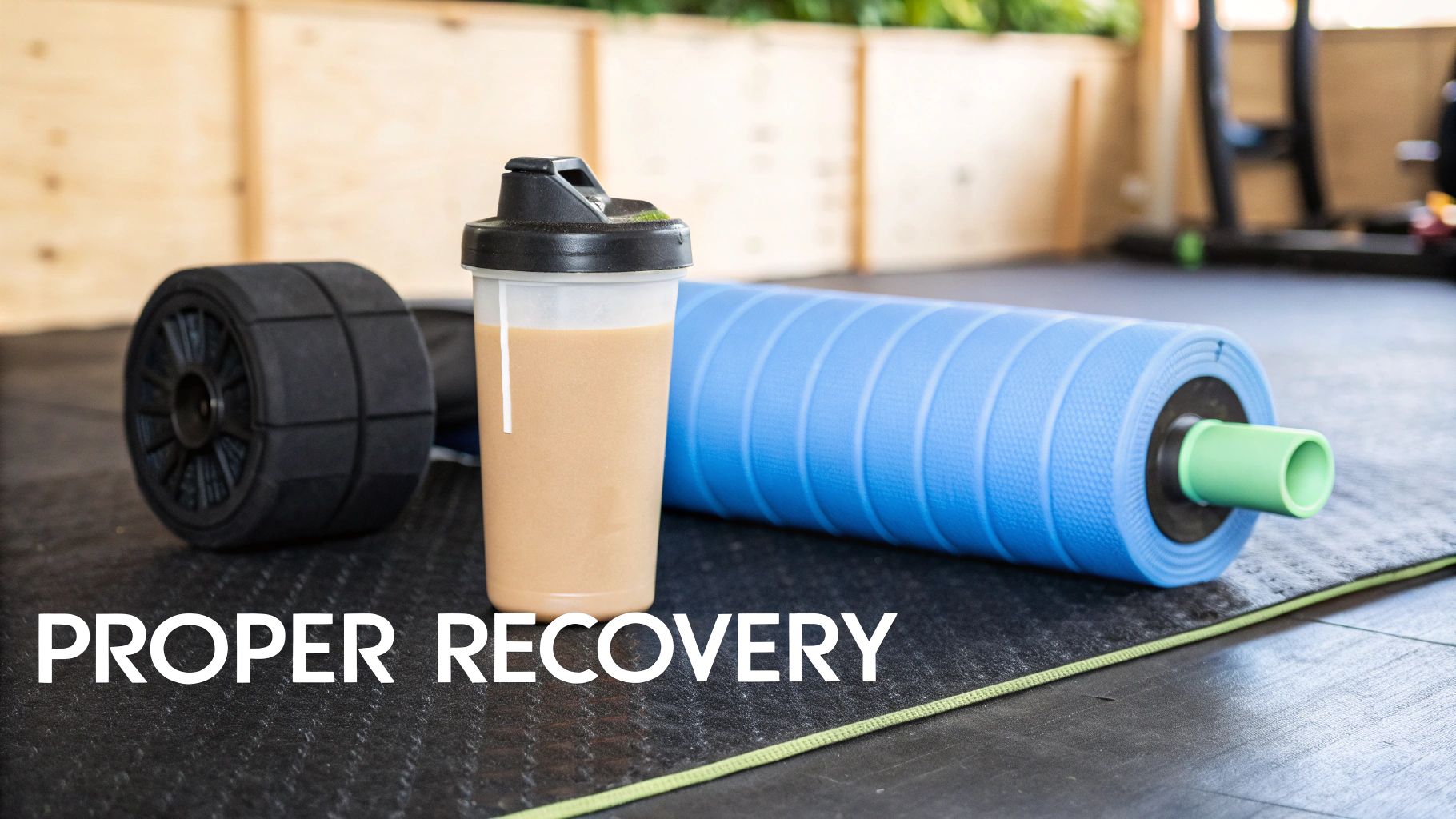
As you begin a new training program, questions will inevitably arise. Getting clear answers is key to staying confident and consistent. Here are the answers to the most common queries about building muscular endurance.
How Long Until I See Results?
This is the most frequently asked question. If you train consistently three to four times a week, you should start to feel a noticeable difference within four to six weeks. You will find you can complete more repetitions or that fatigue sets in more slowly.
More significant, visible improvements in muscle performance and overall stamina typically become apparent after eight to twelve weeks of dedicated training.
Can You Train For Endurance And Muscle Growth At The Same Time?
Yes, absolutely. It is a myth that you must choose between size and endurance. For most people, training for both simultaneously—a method known as concurrent training—is highly effective.
The key is to integrate different training styles into your program. Dedicate a portion of your workout to higher-rep sets (15-25 reps) to build endurance, while also including some heavier, lower-rep sets (6-10 reps) to stimulate muscle growth (hypertrophy).
Do not believe you have to choose between being strong or having stamina. A well-designed program develops both, creating a more athletic and functional physique.
What’s Better: Cardio or Weights?
This is a classic debate. The truth is, both are essential, but they serve different functions.
- Weight Training: This is your most direct tool for building muscular endurance. High-rep sets with short rest periods specifically target and improve the fatigue resistance of individual muscles, like your quads during squats or your back during rows.
- Cardio Training: Activities like running, cycling, or rowing improve your cardiovascular endurance. This enhances your heart and lungs' ability to deliver oxygen to working muscles, which is vital for any sustained physical effort.
For optimal all-around fitness, you must incorporate a combination of both weight training and cardio into your routine.
Is Muscular Endurance The Same As Stamina?
While often used interchangeably, these terms have distinct meanings. Muscular endurance is specific to a muscle or muscle group's ability to perform repeated contractions against a resistance. Think of it as the number of push-ups you can perform.
Stamina is a broader concept encompassing your total ability—both physical and mental—to sustain an activity for a prolonged period. It is the combination of your muscular endurance, cardiovascular fitness, and mental toughness.
Ready to elevate your body's natural energy and resilience? Oji Shilajit can help. Our enhanced gummies are made to boost your stamina, sharpen your mental clarity, and support your recovery. They’re the perfect partner for helping you push through plateaus and smash your endurance goals. Find out more at https://myoji.co.uk.


